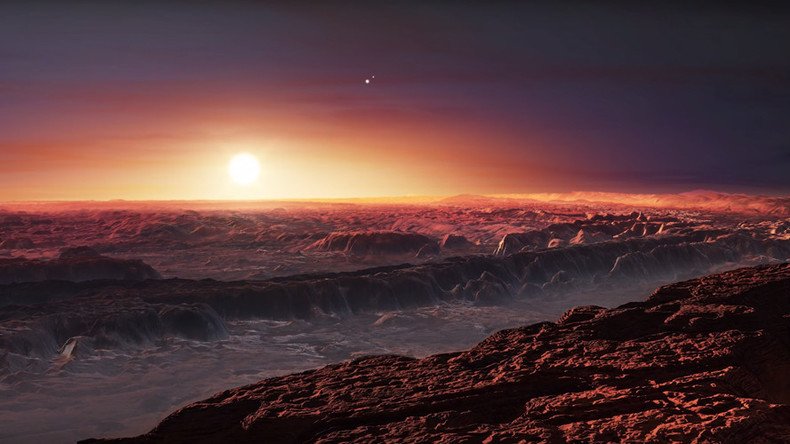‘Proxima b’ move-in ready? Closest ever Earth-like planet confirmed by scientists

Rumors of a not-too-distant potentially life-supporting planet have been rife for the last few weeks but scientists have now finally confirmed its existence. “Proxima b” is the closest planet to home that could harbor life at a mere four light years away.
Earth-mass planet found in habitable zone around #ProximaCentauri#PaleRedDothttps://t.co/rMRRjFcXJw
— ESO (@ESO) August 24, 2016
We want to congratulate our friends at @ESO for the momentous discovery of #Proximab. What a find!
— Royal Observatory (@ROGAstronomers) August 24, 2016
The research published in the journal Nature is the result of years of hard work to confirm the existence of Proxima b, a planet that scientists had previously speculated might be in the habitable zone of the star Proxima Centauri, allowing it to be host to some hopefully friendly neighbors.
Since #ProximaCentauri is an M-type red dwarf star things would look rather different from the surface of #Proximabpic.twitter.com/mkjNdS1YCZ
— Royal Observatory (@ROGAstronomers) August 24, 2016
Using telescopes in Chile light emitted from the star was studied for a half-year, where it was discovered to occasionally wobble, an effect that would be caused by the existence of an orbiting planet.
Existing in the habitable zone, Proxima b could hold water as it is far enough away for liquid to not be gaseous but not too distant for them to be frozen. Pack your jacket though if you’re planning on moving, however, Proxima b is cold at roughly minus 40 degrees Celsius (minus 40 degrees Fahrenheit).
Also pack a swimsuit just in case because if mankind gets to Proxima b and it is discovered to have an atmosphere it could be a little warmer than expected.
Without an atmosphere, Proxima b might not be too appealing though. Lying roughly 5 percent of the distance that the Earth lies from our own sun the planet is likely bathed in intense ultraviolet light and radiation.
(CORRECTION) The planet orbits Proxima Centauri every 11.2 days. What this means for how you might spend a typical "day" on the planet isn't known just yet.
There are currently two main theories though. The first is that the planet is fast spinning, like Mercury. The alternative is that Proxima b is tidally locked, which means there's always daylight on one side while the other remains dark.
"If you are standing [on the side] looking at the star, you are quite warm," said Don Pollacco, professor of astrophysics at the University of Warwick. "If you are on the other side it is bloody cold - continual night."
Given it’s the closest exoplanet we know of that could harbor life or be our second home if somebody is irresponsible with nuclear codes, Proxima b is a likely first destination for interstellar probes, when the technology allows.












